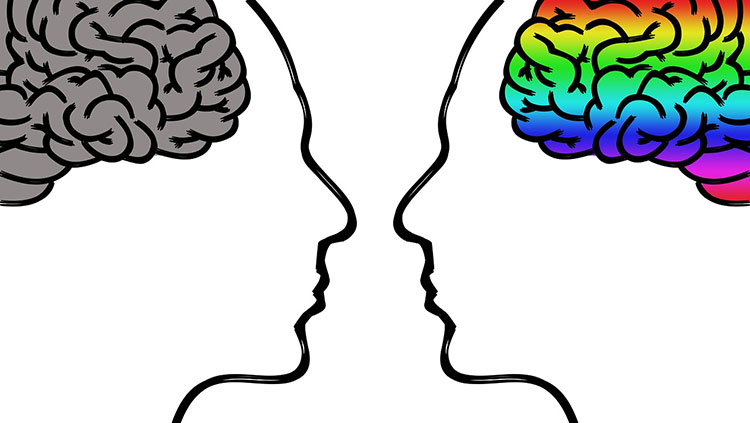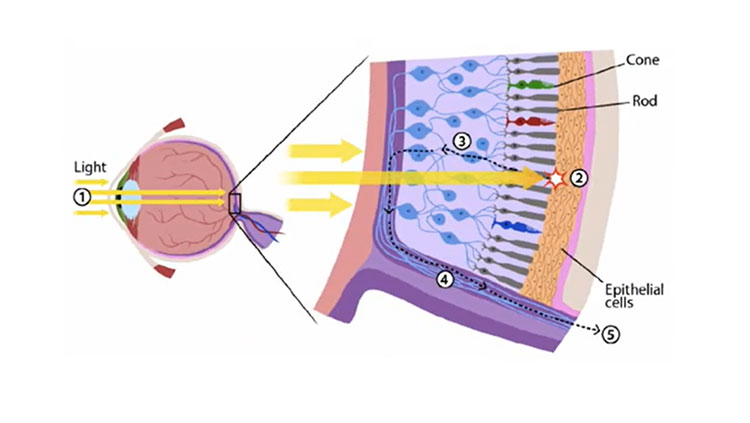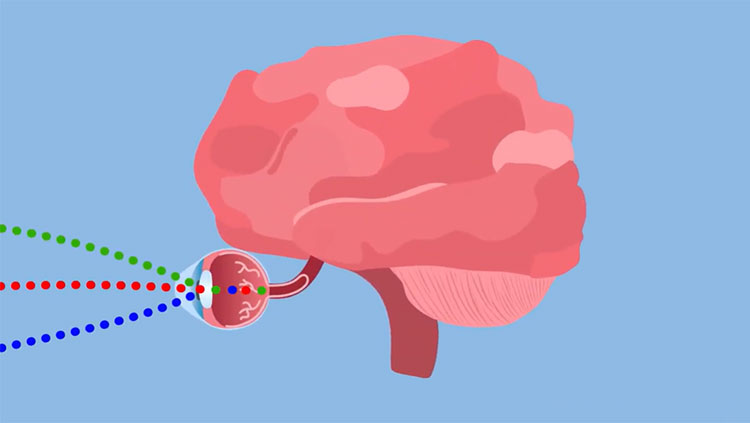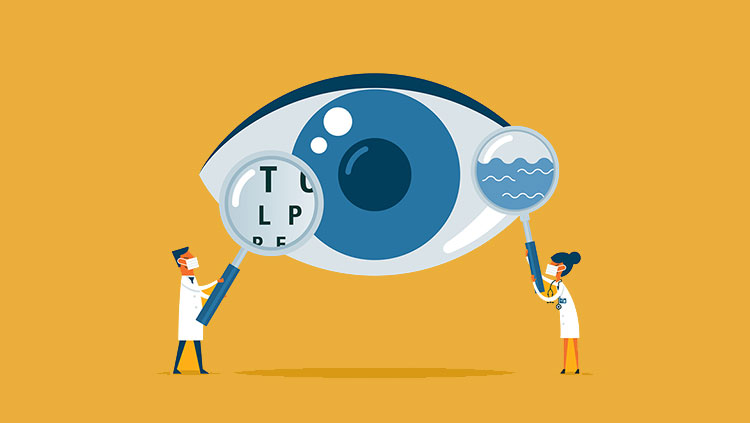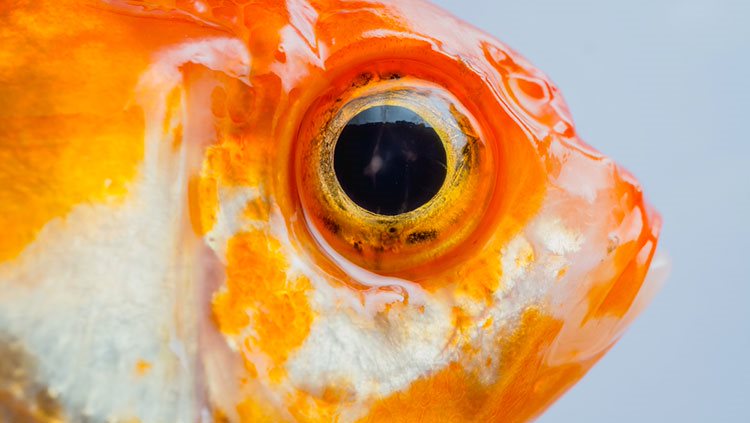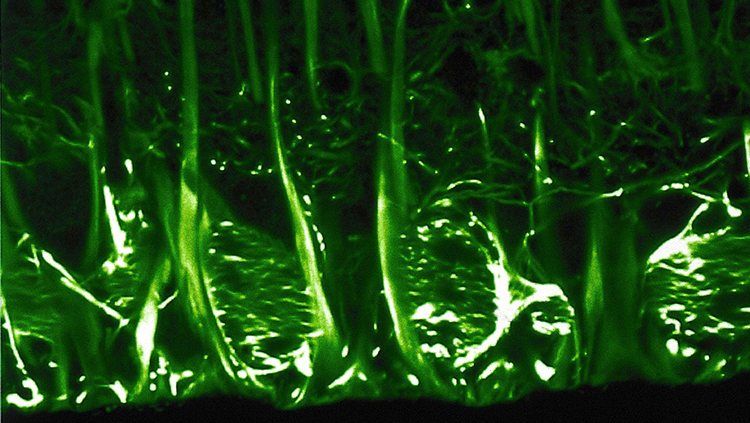
Before light rays can hit your retina, they have to get through a lot of material first. Müller glia, appearing here with vertical green tendrils, make up a major part of that stuff. Mainly serving as support for the eye’s neurons, they mop up extra neurotransmitters and help clear cellular debris. Cylindrical and transparent, they even help with vision by guiding incoming light to your photoreceptors, acting as biological fiber optic cables.
Birds and fish possess Müller glia with an extra ability: When they make more copies of themselves, they generate photoreceptors. This doesn’t happen in mammals (including humans) so when our photoreceptors die our sight gets worse. Recently, scientists modified genes in blind mice to coax Müller cells into creating photoreceptors, and some researchers hope similar techniques could someday help treat blindness in humans too.
CONTENT PROVIDED BY
BrainFacts/SfN
References
Yao, K., Qiu, S., Wang, Y. V., Park, S. J. H. … Demb, J. B. & Chen, B. (2018). Restoration of vision after de novo genesis of rod photoreceptors in mammalian retinas. Nature, 560(7719), 484-488. doi: https://doi.org/10.1038/s41586-018-0425-3.
Also In Vision
Trending
Popular articles on BrainFacts.org


